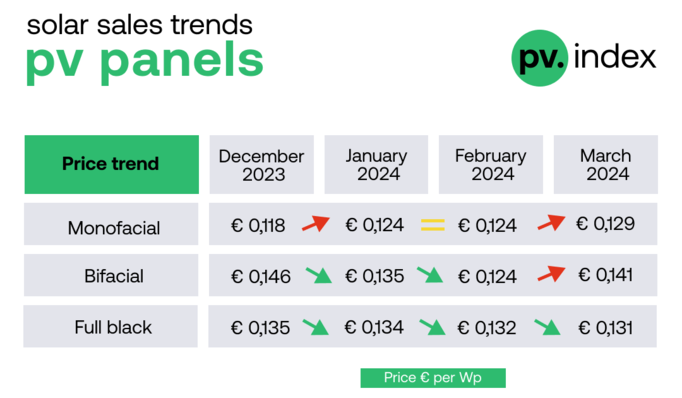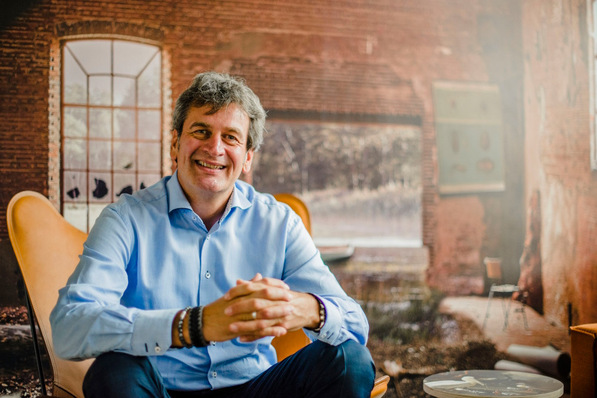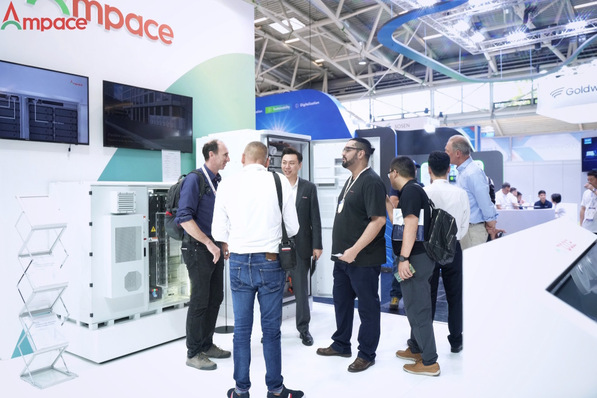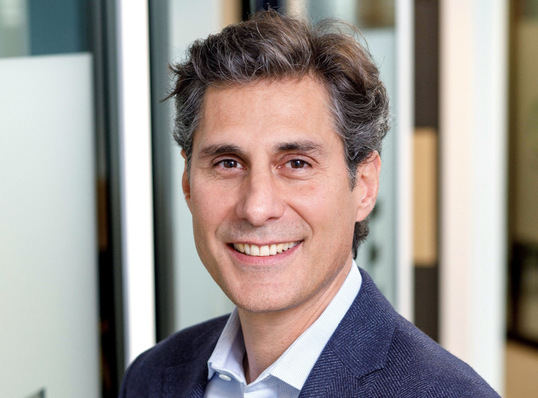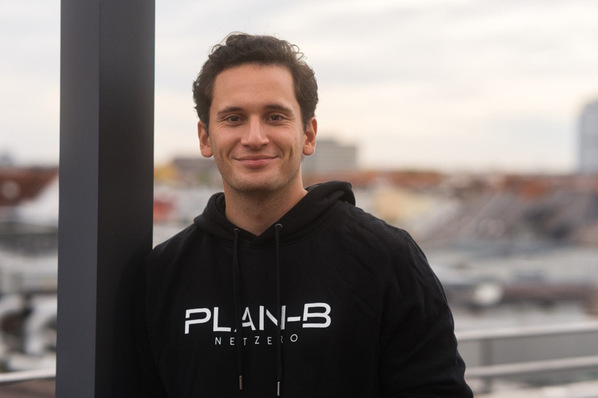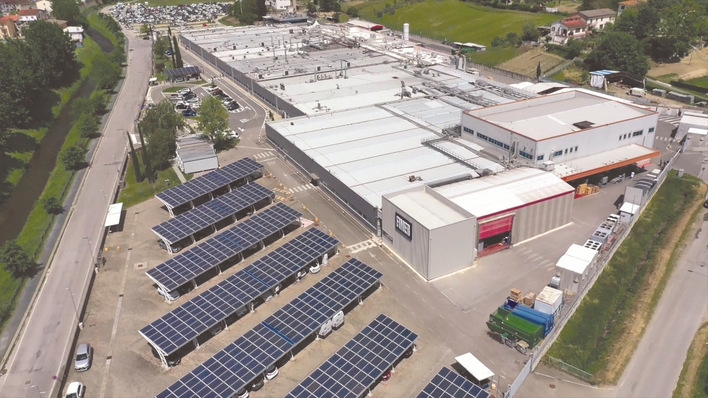pv Europe: Mr. Lippert, you are considered one of the pioneers of the industry and have already experienced a number of highs and lows of the solar market. How optimistic are you for the coming year?
Worldwide PV installation in 2017 is already well above expectations and has tripled in the last 5 years. I assume that the global expansion in 2018 will amount to well over 100 GW. In my opinion, Europe as a whole will continue to lose importance among the global PV markets, but will remain at around the same level as this year. In some markets such as Germany's interest in PV has risen pleasingly this year again, among others. also through the advertising campaigns of new market participants as well as new business and operator models, but also through related topics such as storage, smarthome, sector coupling and e-mobility. Eon for example. wants to provide buyers of electric vehicles in Sweden with five years of free solar power in the future, but also in Germany and other neighboring countries, a slight tailwind for the PV industry is expected. Unlike in 2017, next year we should achieve the much too low, politically desired expansion corridor in the German PV market, my estimate is between 2.5 and 2.7 GW.
How important is the European business for you?
As the markets in the neighborhood grow, their share of our sales increases more and more. We now generate a good quarter of our sales in Scandinavia, Holland and Poland. In view of the massive price reductions in recent years, the freight costs incurred are increasing in percentage terms. Compared with our competitors, our products and services will therefore always be particularly attractive in the geographically close PV markets. This motivates us to expand our market share even in currently stagnating PV markets such as Denmark and Norway.
Which are the top three European markets from your point of view - and why?
I believe that in Europe, Germany will continue to be a leader in 2018, followed by France, Turkey and the Netherlands. While the partially very attractive remuneration rates in France will continue to encourage full feed-in, in other markets in 2018 the trend towards self-consumption will certainly ensure growth. Since the PV growth in the respective PV markets is not only influenced by solar radiation or government subsidies, but also by the level of the average electricity price, there is no clear direction or perspective in the triumphant advance of photovoltaics. The impressive growth rates in Sweden seems to be independent of all these factors, rather driven by idealistic motivation.
At the end of November you were at the fair Solelmässan in Uppsala. What were your impressions, how did the business go?
The Solelmässan was again the most important event for the Swedish PV industry in 2017 and was well attended, with most of the visitors again being academics and students, who probably came mainly because of the connected specialist conference. However, there are not so many installers who have committed themselves to the PV business so far, that they would take the long journey from the south to Uppsala in early winter Sweden. The number of exhibitors who wanted to show a presence here, however, has increased significantly compared to last year. In 2017, the PV market in Sweden is likely to have exceeded the limit of 100 MW of new construction. In absolute terms, of course, this is little, especially given the relatively high sales costs that are incurred, above all, in the far north of Sweden. What attracts us is, in addition to the geographic proximity, the steady growth and the prospect of helping to develop a future market that will blossom independently of political conditions.
How important is your online business for countries like Sweden?
The affinity to the online business is generally above average in Scandinavia. Although the structures and routines in online PV sales are still at the very beginning, I am very confident about the acceptance of online communication and planning tools. We offer installers and planners here an all-round carefree package in Swedish. The response is very positive, not only because the tools can be used for free and integrated into the website. In order to get a more accurate picture of the needs of the industry, we are currently supporting a study in which Swedish PV professionals will be asked about their experiences and expectations. We are looking forward to the results, which we will then certainly incorporate into the further development of our own planning and information tools.
Back to the industry outlook for the new year. Are the solar modules running out? How about energy storage systems?
That was and is in my view not the problem. There will certainly be plenty of offers, especially in the area of cheap products, but caution is always called for. The constant pressure on price development has already led to a strong market adjustment in both solar modules and energy storage. Especially smaller manufacturers can barely break even at today's price level. Further bankruptcies threaten financially weak manufacturers. As a result of the often desperate attempt to score with other arguments, the race for the most spectacular warranty promises continues to escalate. For many providers this is only more likely that they will not take over the product liability in case of serial damage. It therefore remains risky to orientate yourself only towards the price.
Do you expect significant price changes for solar modules and energy storage systems?
As leading manufacturers continued to focus more globally and towards more attractive PV markets, the module availability in Germany 2017 was temporarily limited. In 2018 this could go on and be used by overbooked providers as a reason to keep prices stable. At the same time, the major players are steadily increasing their capacities and production efficiency, and the future quarterly reduction in the minimum prices for module imports from China offers prospects for further falling prices. In addition, planned anti-dumping duties in the USA and India could again lead to an oversupply in the EU and thus increase pressure on prices. So it remains exciting. Maybe you better should accept a secure offer for high quality goods with a fair price in 2018, instead of waiting for bargains. I see a secure tendency towards falling prices and better availabilities only in the very long term.
Thank you very much for the interview and a happy new year!
The interview was conducted by Hans-Christoph Neidlein
Read more about energy storage
Stay informed, get our free newsletter twice a week. Register here.
More useful information:
http://www.pveurope.eu/News/Energy-Storage/EWS-starts-distributing-BYD-energy-storage-systems
http://www.pveurope.eu/News/Markets-Money/Booming-Swedish-PV-market-driven-by-quality-Solarwatt-says


